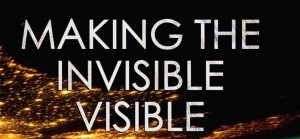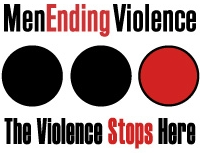
by Rona Amiri, BWSS Violence Prevention Coordinator
The increase in new media and communications has significantly advanced our awareness of gender based violence. What was previously invisible is now visible in a very public way; moments where individuals thought were private are now public and are being shared in the media and on social media. More and more we hear media reports of women who are in relationships where they experience male violence not because they choose to share their stories, but because there are videos of violence against them that are either posted online or shared on social media. We hear the numerous reports of cases where women have been physically assaulted, sexually assaulted, murdered and threatened by men. We have become aware of the numerous cases of young women who have been sexually assaulted and those photos shared on social media and cases of young women’s nude photos being shared online without consent. Moreover, countless girls and young women have to deal with a lot of pain through the re-victimization that occurs through having the nude photos or sexual assaults shared through social media.
However, there is little to no discussion as to why this is happening. Media coverage about violence is often sensationalized and exploitive. Coverage on why girls and women stay is one way in which women are re-victimized. The coverage tends, also, to focus much of its attention on why women stay in abusive relationships rather than discussing why there are such high rates of men’s violence against women in the first place. In Canada young women are 10 times more likely, then boys, to experience violence in a dating relationship and on average, every six days a woman is killed by her husband or boyfriend. In 2014 alone, there have been over 10 murders of women in B.C. by their husband or boyfriend and several attempted murders. And in many of those cases there was a history of violence that was reported to the police. It is also important to recognize that violence in intimate relationships goes largely unreported. The media tends handle such reports in such a way as to make the woman feel worse, as if it was her own fault and to render the male violence invisible.
The coverage in the media should instead provide us with the opportunity to discuss the problem, but more importantly it should provide the incentive to take action! We live in a society where unhealthy/ toxic stereotypes are taught to boys as the acceptable method to express manhood. Changing the way boys and young men are socialized is imperative in preventing violence. People can no longer claim ignorance or deny the fact that men’s violence against women is a real issue; a problem that plagues our society that largely is ignored.
While conversation is significant, change will only happen when we take action. It is time to take action to stop violence in practical and tangible ways. One method to prevent violence is through youth engagement. Here at BWSS we engage youth to be part of the solution! YOUth Ending Violence is our peer driven youth program where we work directly with youth to increase awareness and provide youth with tools to prevent gender based violence and sexism. Not only do youth have the opportunity to discuss and increase their knowledge about dating violence; they are also able to practice ways in which they can stop abusive/sexist behaviours when they witness it through effective bystander activities. Through our presentations youth have improved ability to be critical of the media around them and recognize the role of socialization when it comes to masculinity, femininity and dating violence. We have seen the difference through our workshops based on our evaluations, the majority of youth share an increase in knowledge and just over half of participants shared they feel more comfortable standing up to sexist and abusive behaviours with their peers.
We are currently booking our prevention workshops for youth across the Greater Vancouver area in schools and community organizations. Email yev@bwss.org for more information or to book a violence prevention workshop.
Click here to learn more about our program and help keep it running!
If you could do something to end violence against girls and women, wouldn’t you?






